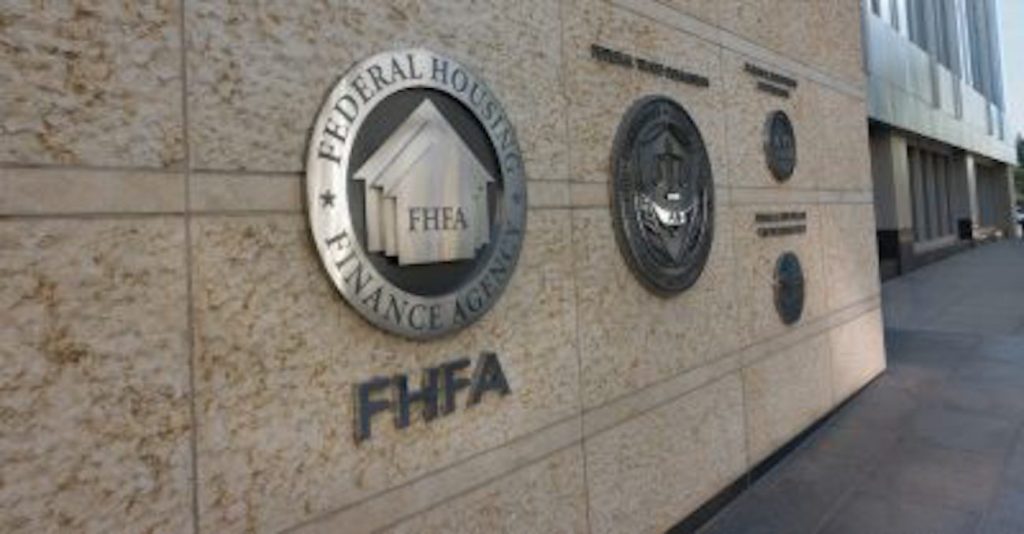On Tuesday, the Federal Housing Finance Agency (FHFA) released a report that examines the Federal Home Loan Bank (FHLBank) system, looking back at its 90-year legacy and offering a series of transformative goals the agency hopes to reach before its centennial in 2032.
“The Federal Home Loan Bank System is a critical component of the nation’s broader housing finance system,” said FHFA Director Sandra Thompson in a statement. “FHFA is focused on ensuring that the FHLBank System serves as a stable and reliable source of liquidity in support of its housing finance and community development objectives – and does so in a safe and sound manner.”
Aims of the report
The 114-page report examines the background and mission of the system, as well as overviews of its aim to supply liquidity, housing and community development alongside a status update for its operational efficiency, structure and governance.
The report also looks ahead to offer thoughts on ways to improve its functions in the housing finance sector, sourcing its conclusions based on “robust public engagement over the course of the past year, including listening sessions and regional roundtables as well as multiple opportunities for written input from stakeholders.”
The agency drew on feedback released through public engagement and conducted its own internal analysis, including recommendations for “how the FHLBank System could effectively fulfill its mission,” the agency said.
“FHFA expects the initiative to continue as a multi-year, collaborative effort with stakeholders to address the recommended actions in the report.”
Selected findings and proposed actions
“[F]or complex and varied reasons, there has been a decreased focus on housing-related activities by many institutions that are members of the FHLBank System,” the report explained. “These changes, taken together, highlight the need for (agency) to clarify the mission of the System so the FHLBanks are held accountable for serving their public purpose.”
The report found that FHFA must distinguish the role of the FHLBanks in providing secured advances from the Federal Reserve’s financing facilities, “which are set up to provide emergency financing for troubled financial institutions confronted with immediate liquidity challenges.”
The FHLBank system lacks the resources to serve as a “lender of last resort for troubled members” with elevated borrowing needs over a short time.
Because of this, members are encouraged to coordinate their needs with “primary regulators and the Federal Reserve Banks to ensure their members’ borrowing needs continue to be met when they no longer satisfy the FHLBanks’ credit criteria.”
Housing and community development goals
The FHLBanks system provides advances based on the acceptance of housing collateral and also supports housing finance more directly through the purchase of single-family mortgages through certain affiliate programs.
In this area, FHFA aims to expand its focus on housing and community development through three key actions.
These include “requiring the FHLBanks to establish mission-oriented collateral programs that could improve their support of sustainable housing finance and community development products that lack a reliable secondary market outlet.”
Increasing FHLBanks’ engagement with “mission-oriented members,” including community development financial institutions” (CDFIs), is a goal, as is “re-evaluating the definition of long-term advances” that are currently restricted to “fund residential housing finance.”
The system’s operational efficiency is another improvement target. FHFA aims to ensure “the FHLBanks are structured to be efficient and stable moving forward.”
Membership eligibility requirements should also be changed to “promote sufficient mission orientation, while ensuring the safety and soundness of the System,” FHFA said.
Housing industry responses
Responses from certain housing industry associations were mixed.
Pete Mills, SVP of residential policy and strategic industry engagement at the Mortgage Bankers Association (MBA), said that the report “fails to engage in a more meaningful examination of the potential benefits of diversifying the FHLB system through the expansion of membership to other critical providers of mortgage origination, servicing, and investment activities.”
FHLBanks would benefit from “a membership base that better reflects today’s housing finance system, including independent mortgage banks (IMBs), who originate and service most mortgages, and mortgage REITs, which are important long-term holders of mortgages and mortgage-backed securities,” Mills added.
The Community Home Lenders of America (CHLA) directed some of its response at Ginnie Mae.
“In light of FHFA’s decision to defer to Congress on IMB membership in the FHLB system and the continued obligation of IMB servicers to act as bankers to defaulted mortgage borrowers, it is more important than ever for Ginnie Mae to expand the existing PTAP liquidity facility for solvent lenders, so they can meet higher advance responsibilities in turbulent markets,” said Scott Olson, executive director of CHLA.
Ryan Donovan, president and CEO of the Council of Federal Home Loan Banks, which represents all 11 member institutions of the system, said it has already begun moving proactively based on public feedback that contributed to the report.
“Our members know they can count on us through all market conditions, and the overwhelming sentiment from FHFA’s review was that stakeholders want more, not less, from the FHLBank System,” Donovan said.
“[T]he FHLBanks have already begun responding to stakeholder feedback and have voluntarily increased their commitment to affordable housing and community development by 50 percent above the statutory minimum and are exploring ways to further support [CDFIs].”





